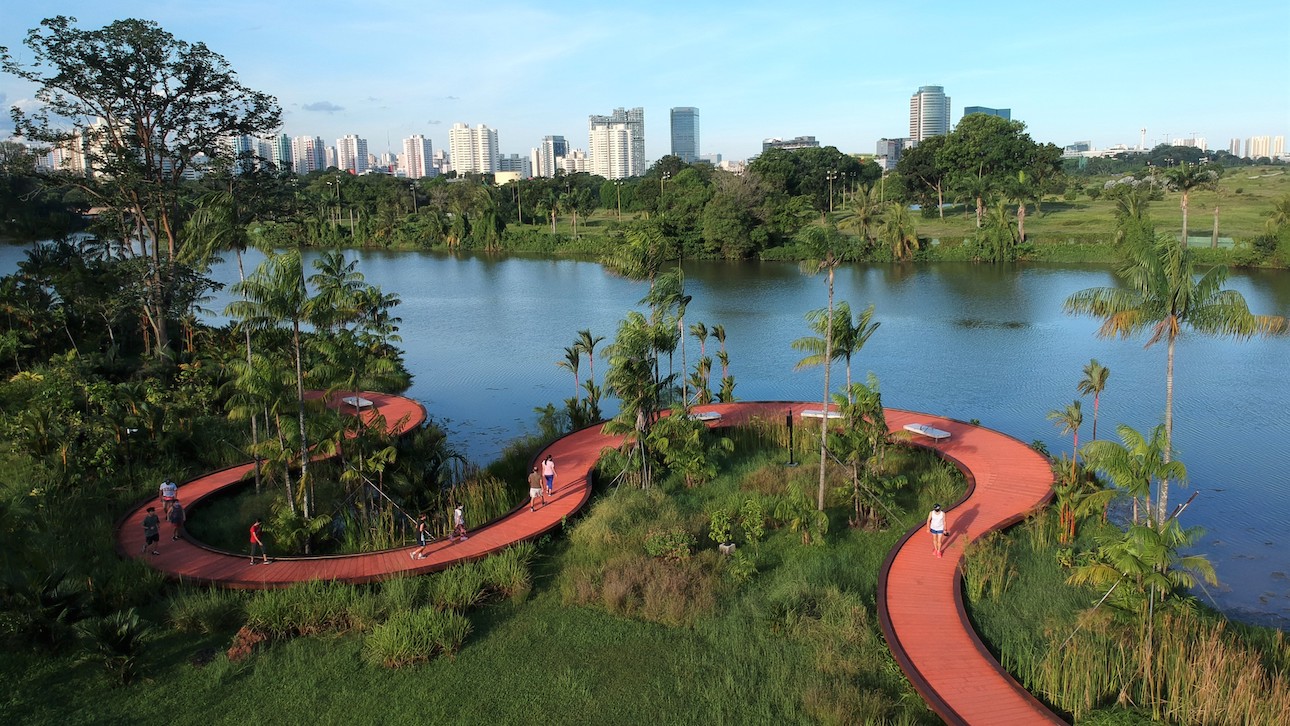Parks That Protect

Leveraging Waterfronts for Resilient Communities
Parks That Protect highlights leading-edge waterfront park projects that are designed to protect their neighborhoods from climate threats while improving residents’ health and quality of life. In communities around the globe, waterfront parks are ground zero in the fight against climate change—and a key part of building resilient, healthy, and equitable cities for the future.
Case studies include:
- Cramer Hill Waterfront Park (Camden, New Jersey)
- Detroit Riverfront (Detroit, Michigan)
- India Basin Waterfront Park (San Francisco, California)
- Jurong Lake Gardens (Singapore)
- Langone Park and Puopolo Playground (Boston, Massachusetts)
- Nassauhaven and Heliport (Rotterdam, the Netherlands)
- Smale Riverfront Park (Cincinnati, Ohio)
Both public- and private-sector leaders are essential constituents and partners in efforts to ensure equitable park planning, policymaking, and investment. Waterfront parks can help address longstanding inequities in park distribution while supporting resilience, health, and access to opportunity for all residents.
These case studies provide valuable insights for city officials, developers, and nonprofit partners working to create resilient waterfront parks in their own communities. While the details vary between the parks profiled in the report, several overarching lessons can be gleaned from these innovative efforts. These lessons include the following:
- Ground decisions in climate-smart data;
- Design for the future;
- Invest equitably across cities and neighborhoods;
- Tap into the community as park co-creators and operators;
- Embrace nature;
- Make every dollar multitask;
- Convene diverse public and private partners to plan, fund, and manage parks; and
- Learn from past experiences to budget accurately.
While urban waterfronts can heighten the climate change challenges that their communities face, they can also be important components of the solution. With thoughtful planning and design, waterfront parks can provide a host of health and environmental benefits while protecting the neighborhoods around them from rising waters, flooding, and other climate impacts.
Report Summary: Parks That Protect highlights leading-edge waterfront park projects that are designed to protect their neighborhoods from climate threats while improving residents’ health and quality of life. In communities around the globe, waterfront parks are ground zero in the fight against climate change—and a key part of building resilient, healthy, and equitable cities for the future.
Case studies include:
- Cramer Hill Waterfront Park (Camden, New Jersey)
- Detroit Riverfront (Detroit, Michigan)
- India Basin Waterfront Park (San Francisco, California)
- Jurong Lake Gardens (Singapore)
- Langone Park and Puopolo Playground (Boston, Massachusetts)
- Nassauhaven and Heliport (Rotterdam, the Netherlands)
- Smale Riverfront Park (Cincinnati, Ohio)
Both public- and private-sector leaders are essential constituents and partners in efforts to ensure equitable park planning, policymaking, and investment. Waterfront parks can help address longstanding inequities in park distribution while supporting resilience, health, and access to opportunity for all residents.
These case studies provide valuable insights for city officials, developers, and nonprofit partners working to create resilient waterfront parks in their own communities. While the details vary between the parks profiled in the report, several overarching lessons can be gleaned from these innovative efforts. These lessons include the following:
- Ground decisions in climate-smart data;
- Design for the future;
- Invest equitably across cities and neighborhoods;
- Tap into the community as park co-creators and operators;
- Embrace nature;
- Make every dollar multitask;
- Convene diverse public and private partners to plan, fund, and manage parks; and
- Learn from past experiences to budget accurately.
While urban waterfronts can heighten the climate change challenges that their communities face, they can also be important components of the solution. With thoughtful planning and design, waterfront parks can provide a host of health and environmental benefits while protecting the neighborhoods around them from rising waters, flooding, and other climate impacts.


